|
Flint Placemaking Week took place September 2021 and brought placemakers from 25 states across the country to meet community leaders, explore issues and grow in our placemaking practice together. Tuesday - Sep 21Mural Walking Tour As placemakers arrived from all over the country, our first introduction to Flint was a Mural Walking Tour of Carriage Town and Downtown hosted by Director of Placemaking for What's Up Downtown Flint, Kady Yellow. Kady explained the differences of street art, graffiti and murals and showcased the stories behind some of Flint's earliest murals, an outdoor art collection worth more than $1 million according to Kady's own research. Orientation to Flint We next planned to host our Orientation to Flint outside at the Riverbank Park Amphitheater, but the weather had other plans and we stuffed into the Mott Room at the Hilton Garden Inn to hear about Flint's history as the birthplace of the automobile industry, demographics that revealed the low-income and formal education achievements in Flint, and an introduction to the Flint Water crisis by local water entrepreneur Alex Love, the Neighborhood Engagement Hub's Carma Lewis, The Porch Project's Meghan Heyza and place advocate and urbanist Cade Surface. Opening Party - Cohort Gathering Following Orientation, our groups divided into cohorts based on their expertise and interest and headed off to dinner at Cork on Saginaw. It was a lively venue for discourse and initiating warm connections, especially with the urging of Tetia Lee for all to enjoy a Tequila shot and for Kady Yellow's gracious offering of a champagne flute to all upon arrival. Groups sat by interests including: Downtown Management, Connecting Neighborhoods, Healthy Placemaking, Creative Placemaking, Makers of the New Economy, and Streets for People. Wednesday - Sep 22Opening Morning at GM Factory #1 We opened Placemaking Week officially at the iconic birthplace of General Motors. The Mayor of Flint welcomed us along with Placemaking Poet, Frankie McIntosh. Kady Yellow of What's Up Downtown Flint introduced us to her placemaking journey and showed the resident-lead work she has been supporting. Ryan Smolar of Placemaking US and Amy Stelly of the Claiborne Avenue Alliance in New Orleans utilized the historic venue to talk about the relationship between cars and automobile infrastructure and livability, sociability and interconnectedness of our neighborhoods. Moses Timlin, from the Genesee County Land Bank showed us the healthy placemaking he'd been a part of in the Carriage Town neighborhood we were in and Leslie Mattie-Rich of Westwood Works in Cincinnati showed us how she built back up her own neighborhood with programming and ultimately redesigning their central square. Sherryl Muriente shared insights from her international career participating in innovative practices like archaeology of place and urban acupuncture. Healthy Placemaking Luncheon and Makers and the New Economy Due to the rain, we had to pivot two afternoon engagements into an impromptu venue: a maker space right down the street from GM Factory #1 which is cheekily called Factory 2. This venue ended up being apropos, because it showed-off a juxtaposition in thinking from organizing big capital (like at GM in the 20th century) to fostering community capital and social capital as a basis for local industry. The Healthy Placemaking panel explored the expansive relationship between place and health, and the ways placemakers are building opportunities for places and people to be healthier from physical activity to mental health, safety from violence and access to economic and education opportunity. "The number one determinant of health is your zip code," stated Hanna Love, a researcher at the Bass Center for Transformative Placemaking at the Brookings Institute. Meghan Heyza of the Porch Project shared how she does participatory research with populations, not on them, but with them, by building long-time relationships with people whose health outcomes she is hoping to improve. Molly Baskin graduated from a crowdfunding placemaking program that helped her launch outdoor step exercise classes at Downtown Flint's iconic Brush Park. She shared how her public-facing Curvy Girl Fitness classes expand the idea of what healthy looks like by showing-off many body types on their journey for health with an enticing collective energy. The Makers and the New Economy session was supposed to take place as a walking tour pointing out sites relevant to our discussion, but we had to hang back at Factory 2 due to extreme weather outside. Tony Vu, a local food entrepreneur pivoted us from the Healthy Placemaking session into the Makers and the New Economy session because his story straddled the fence between the two topics. Tony has a kitchen stall at the Flint Farmers Market and he has a food trailer. With this lightweight infrastructure, he makes his permits and facilities and industry know-how available to up-and-coming food purveyors. Through a pipeline system Tony has designed, he helps home chefs and budding roadside entrepreneurs to take steps towards opening their own food businesses. While Tony has hacked together his current setup under the name The Flint Social Club, he has big plans to build out an entire food hall on the Flint River which was just awarded $375,000 from the State of Michigan. The adjacency of these sessions was great because as the Healthy Placemaking was wrapping up, the points were centering around personal responsibility and access to education and jobs. As the economy session kicked-off, the importance of supporting local entrepreneurship was further explored. Jane Jacobs' idea of "import replacement:" replacing what is bought from afar with local makers and products was discussed as well as the importance of event-driven "market-making." Barriers to entry like the obstruction of permits, fees and paperwork were lamented for keeping so many from creating more. After the session, Jaime Izurieta, an urban planner focused on economics and small business culture wrote a paper, "Fred and Barney Walk into a Bar," on his experience in Flint and the idea for a local currency, Flintcoin to take shape and keep money circulating in the local economy. One attendee shared how his local pedicab company has run on a "pay what you will" model, which has allowed his business to grow to four times the size of his stiff-priced competitor. Connecting Neighborhoods - Bus Ride Part 1 When reaching out to local Flint neighborhood leaders and placemakers, they made it clear that they were very interested in having us come see and support their work. Jane Richardson met us in the rain along with her neighbors who have heroically lead the creation of the MLK Peace Garden along Martin Luther King Avenue on the former site of 10 vacated house lots which were demolished after years of abandonment by the Genesee County Land Bank, the country's first "land bank" and owner of over 20% of the property in Flint, Michigan. Connecting Neighborhoods - PlaceIt Exercise with James Rojas Famed Latino Urbanist James Rojas demonstrated his PlaceIt planning game for the 1st Ward: In the Beginning group in an effort to show how many more people can be brought into the act of building their city from a place of positivity and joy. With a colorful assortment of toys, participants were asked to build their favorite childhood memory and share them with the group. After this warm-up exercise, teams were asked to work together to build a place for Flint. The PlaceIt activity at the Hasselbring Senior Center elicited several good ideas including a mobile downtown that could be brought into the neighborhoods to help bridge the Downtown-Neighborhood divide. As Carma Lewis from the Neighborhood Engagement Hub put it: "I actually see objects and green spaces through a new lens." Jennifer Johnson from Michigan United also said she would use the tool in future engagements. See James' full gallery of photos from the activity. Connecting Neighborhoods - Bus Ride Part 2 On the ride back to downtown, we detoured down Caniff Street where Meghan Heyza has helped build over a dozen porches for neighbors as social spaces that help reintegrate the neighborhood. Meghan built so many relationships and porches as part of her Porch Project on these blocks, that several partners came together to host a Porchfest with multiple placemaker production partners placing bands on the porches while visitors watched from couches placed in the street. Exploring Flint for an Evening We couldn't get enough of Flint's interesting nightlife on Wednesday night. We started off at Blacksone's where Eclipse Band set the night on fire. Esteemed members of Flint's emerging hip hop scene like Jeff Skigh and the creative talent surrounding him stopped in to meet with the placemakers before all headed off to Flint Hard Cider Co for karaoke and cider made from local orchards. Thursday - Sep 23Group Check-in and Placemaking Network Chat We started off the morning with Kady Yellow asking all about their "top moment" so far. Answers varied from the Opening Session at GM #1 when we actively defined "What is Placemaking?" to Kady's welcome Mural Walking Tour and meeting the ladies of the MLK Peace Garden in the rain. Afterwards, Ethan Kent, leader of the global PlacemakingX networks gave a history of his participation in the placemaking movement and the current strategy to network placemakers to continue to innovate and popularize the ideas behind civic lead place development and management. Ryan Smolar of PlacemakingUS also spoke briefly regarding the Roadtrip to the Recovery in which he visited over 100 placemakers embedded in 60 cities to talk about their work and to encourage them to seek support from American Rescue Plan Act local funding. He explained how Flint Placemaking Week was constructed to build stronger connections between each of us to be able to help forward the field of placemaking across the US and beyond through our connection with the entire PlacemakingX family. Downtown Management Luncheon Flint's downtown is re-emerging as the city's central creative core of activity. We invited Flint's new Downtown Development Authority Executive Director, Kiaira May, to connect Flint's downtown-focused departments and players with visiting experts from across Michigan and beyond. Visiting downtown leaders shared how inspired they were by the Flint community's participation and self-direction and reinforced that the chief job of those in downtown power positions is to build relationships, gather resources and support access of downtown as an equitable community asset. Cathleen Edgerly of Downtown Lansing Inc has invited all the Downtown of Michigan present to keep in touch and form a network to support each others' efforts. Creative Placemaking The Creative Placemaking cohort did not disappoint. They entered the room with high energy and rock anthem accompaniment and the spirit came alive in Comma Bookstore and Social Hub, one of the nation's few black woman-owned independent bookstores. Practitioners like Patrick Fisher of Erie Arts & Culture showcased how the arts can be a major leader in equity, in housing and in all fields of social life. Jerin Sage, the local creative mind behind Flint Drop Fest shared his alloted time with fellow community placemakers who he met way back at an early urban garden project they did together under the collective name, Peace Mob. Famed Flint Public Art Project maestro Joe Schipani showed-up and was able to coordinate some artist exchange with fellow mural project leader Tetia Lee from Lafayette, Indiana and we were serenaded by poems by both Frankie McIntosh and Nic Custer. Streets for People Our Streets for People cohort worked with the community including Tony Vu of Flint Social Club, Jamelle Glover of In the Beginning: 1st Ward Project and Greg Fiedler of the Greater Flint Arts Council on ideas for revitalizing the area around 1st Ave and Saginaw. The group settled on a vision for closing 1st Ave between Saginaw and Garland to create a Food Truck Park. Greg Raisman from Portland Bureau of Transportation offered 1 year of technical assistance to complete the project. Krista Nightengale, Executive Director of The Better Block and Kirk Rea, the Executive Director of City Repair all provided incredible support for this amazing engagement. Amy Stelly of the Claiborne Ave Alliance in New Orleans provided stories and videos from Second Line Sunday in New Orleans to show what Streets for People means in the most vivid of ways. Closing Party - The Three Floor Discoteca Kady Yellow engaged the local creative community and small businesses to throw a stellar farewell for all of the placemakers. A "3-Floor Discoteca" was what she called it and it was a stacked house of charcuterie and jazz and poetry in Cafe Rhema's speakeasy space on the ground floor, a drum circle and psychedelic space on the second floor photographer's studio and a DJ-bump and grind popup night club on the third floor for those who dared to enter. Locals and visitors got another chance to learn about each other's work and side hustles, like Sherry Muriente's interesting guerilla art project, Dudali. Friday - Sep 24Closing Tours - Off to Detroit
Unfortunately, our Friday morning kayaking tour of the Flint River had to be cancelled due to the rains during the week. Instead, a Flint art gallery tour and a side trip to Detroit were offered. Several placemakers piled into two cars heading down from Vehicle City to Motor City and took a tour of Downtown Detroit's famous public spaces like Campus Martius and emerging spaces like Capitol Park and with longtime placemanager Bob Greggory.
2 Comments
|
AuthorsArticles contributed by placemaking experts across the US Archives
April 2024
Categories |
PlacemakingUS
|
PlacemakingUS Newsletters
|

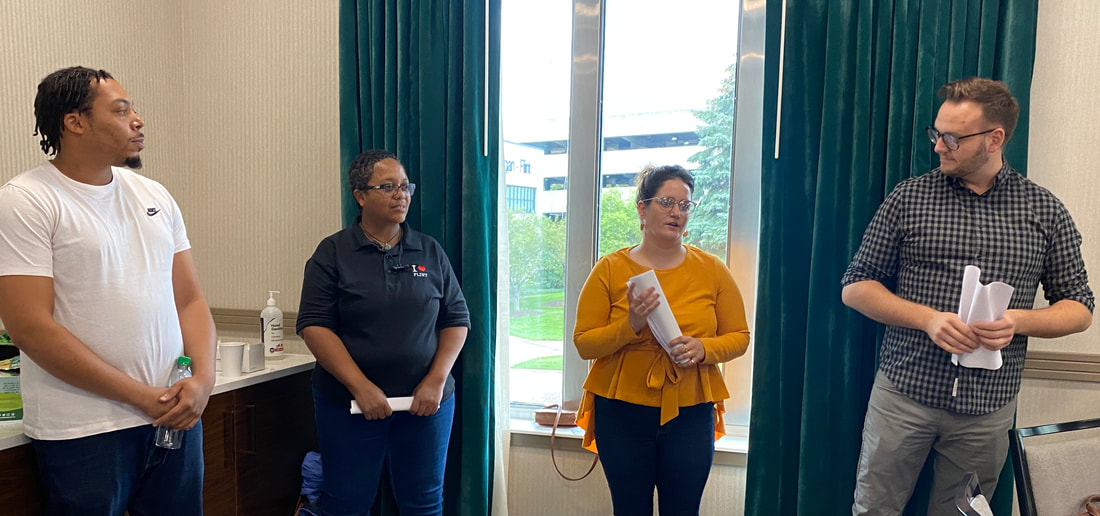


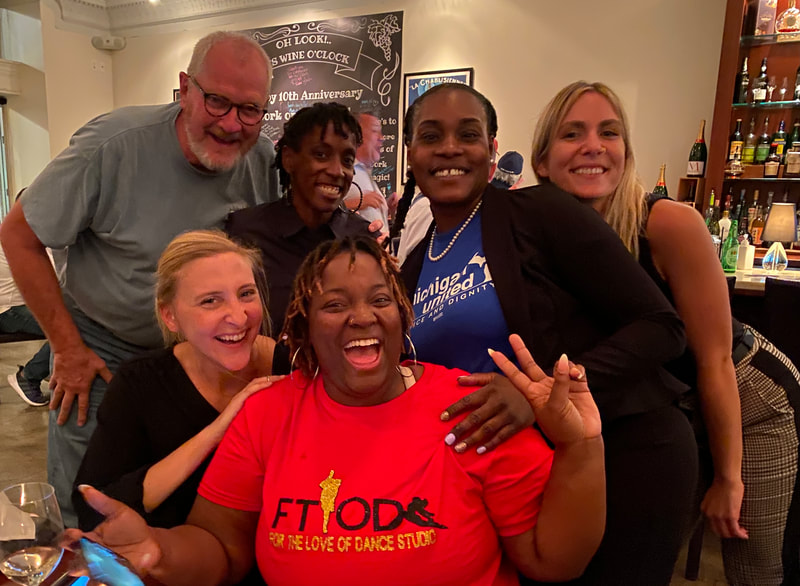



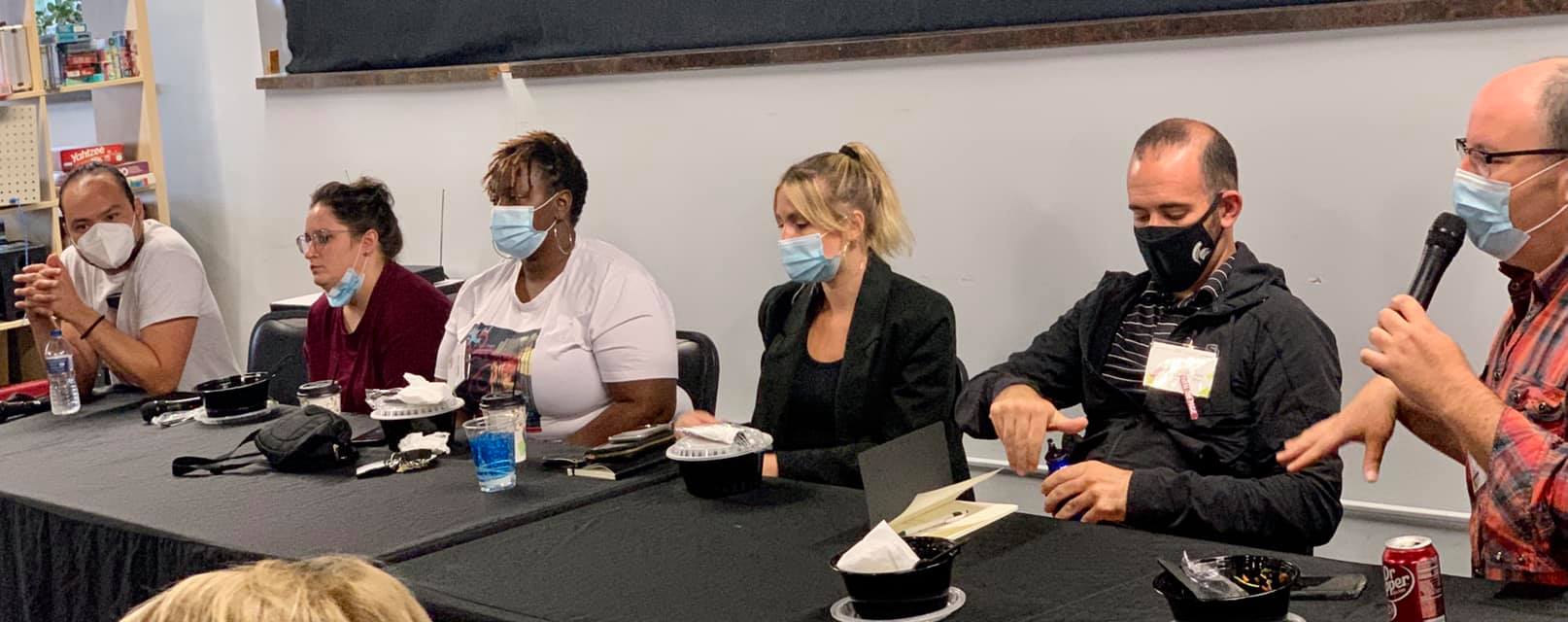

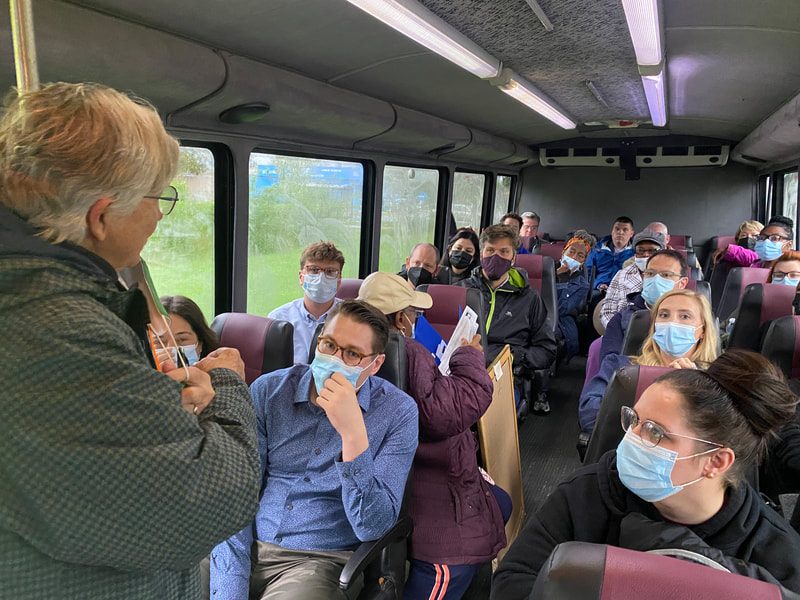
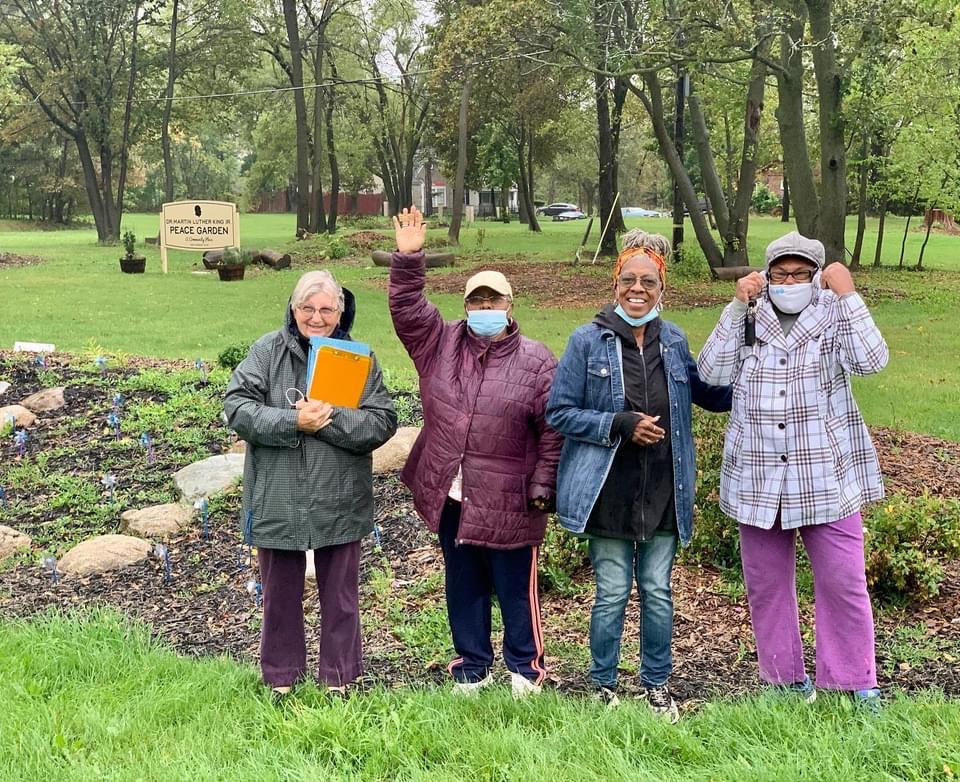








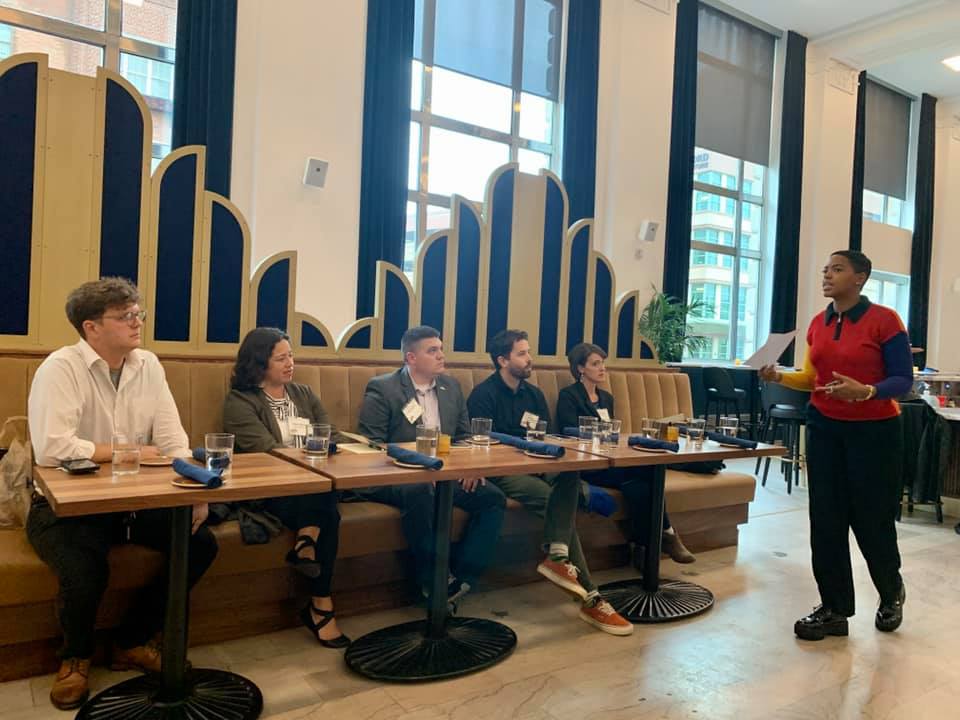
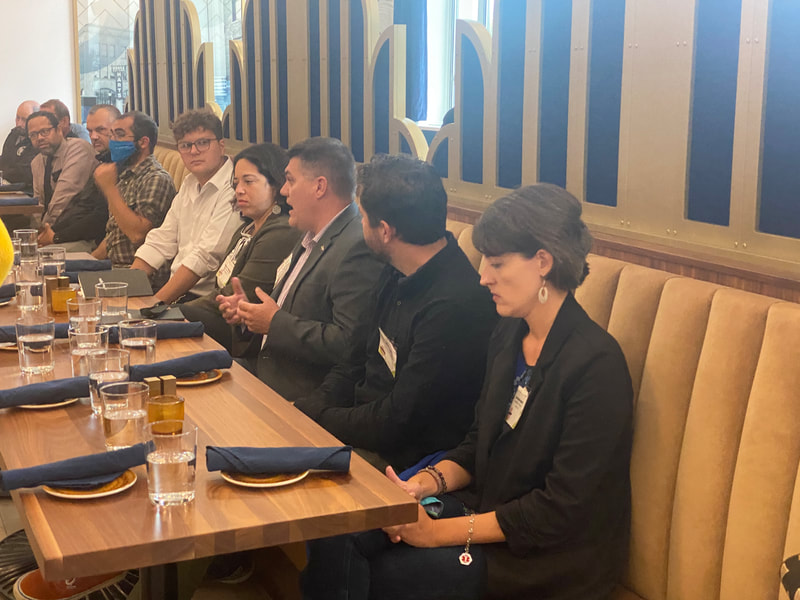







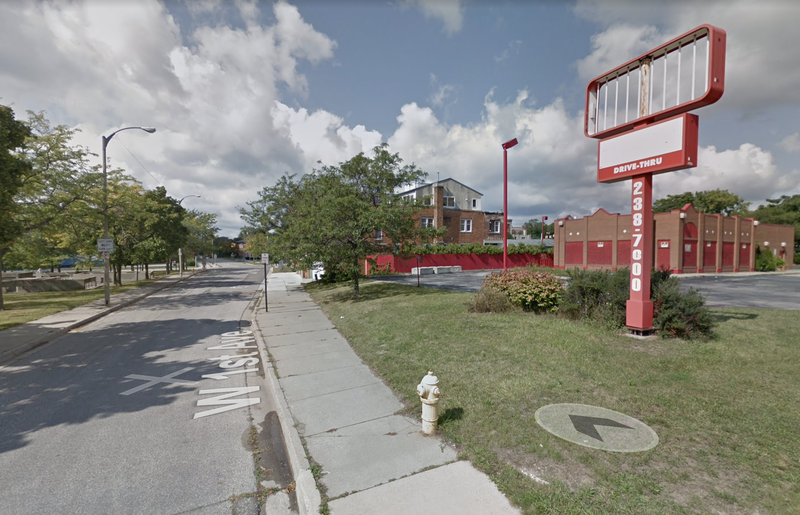

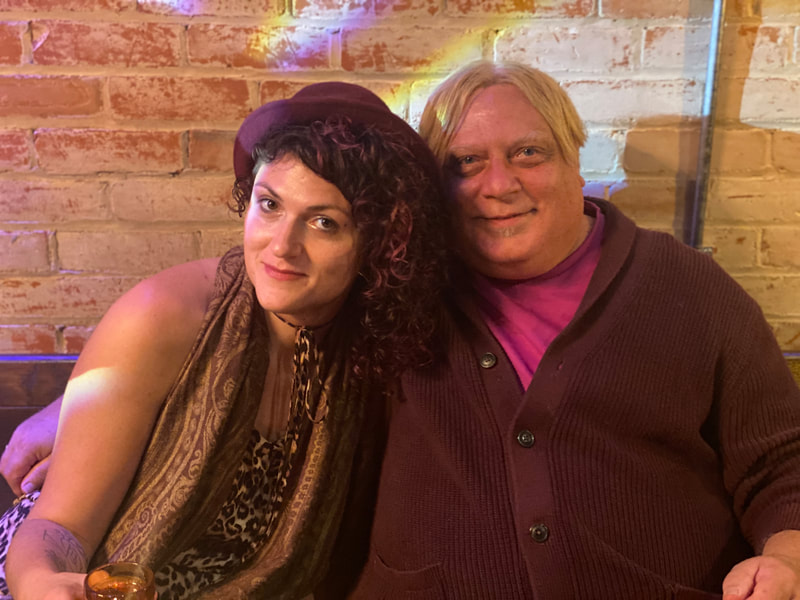


 RSS Feed
RSS Feed
